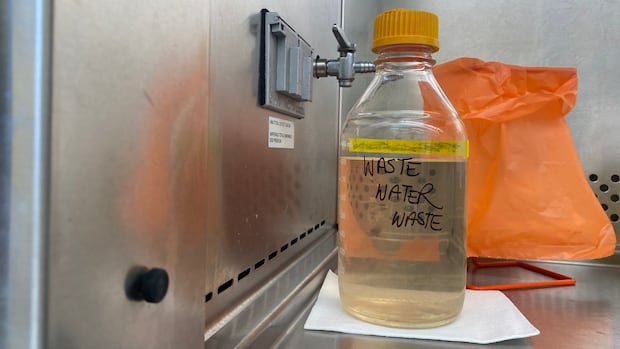There is a shortage of some commonly-prescribed painkillers in Canada, as companies that supply them deal with manufacturing disruptions and increased demand, according to a notice published on Health Canada’s website.
The medications in question are acetaminophen with codeine (sometimes known as Tylenol 3) and acetaminophen with oxycodone (sometimes sold under the brand name Percocet).
As a result of the shortage, Health Canada’s notice said these drugs have become harder to get and “may not always be available.”
Here’s what you need to know.
Manufacturing troubles cause ripple effects
Health Canada’s notice says the shortage of acetaminophen with codeine is linked to manufacturing disruptions reported by Teva Canada Limited, resulting in increased demand and shortages reported by Apotex Inc and Laboratoire Riva Inc, the other companies that also market the drug in Canada.
Teva’s manufacturing problems are also affecting its supply of acetaminophen with oxycodone, leading to an increased demand other companies can’t make up for.
In a statement, Teva said the problem is “due to a short delay in our supply chain relating to the active pharmaceutical ingredient (API) shipment from our supplier.”
The company says it “expects to be able to accelerate production of an initial supply for early August 2025” and for full supply to be restored in Canada by September.
A spokesperson for Health Canada, Mark Johnson, said in a statement that the agency is “working closely with manufacturers, health-care providers and provinces and territories to monitor the situation and explore options to increase access.”
“You never want to see a shortage, period. But you definitely don’t want to see it with something that’s this common,” said Mina Tadrous, associate professor with the Faculty of Pharmacy at the University of Toronto.
Tadrous says these drugs are prescribed for both acute pain — following a surgery or dental procedure for example — and for chronic pain, for patients who need them on a long-term basis.
He says supply-chain problems for one drug company can affect supply across Canada.
“We see a domino effect. One drug goes on shortage, everyone switches to another generic,” he said. “That trickles through.”
‘Don’t panic,’ pharmacists say
While the shortage can complicate things for patients and pharmacists, the Canadian Pharmacists Association says pharmacists are used to managing drug shortages and helping patients through them.
“The good news is, there are alternatives available,” said Sadaf Faisal, a pharmacist and senior director of professional affairs at the Canadian Pharmacists Association.
Faisal said the association is in close contact with Health Canada and is monitoring the situation closely.
In the meantime, her advice to patients is: “Don’t panic. Talk to your health-care providers, go to your pharmacist. They have resources available to them that provide the safer alternative.”
She also advises patients to try not to wait until they are almost out of their medications to renew prescriptions.
What pharmacists are doing
The association has published a clinical resource for pharmacists as they navigate the shortage. It provides guidance on suitable alternative medications, switching strategies and how to best monitor changes.
Faisal says pharmacists can work with patients to fine-tune suitable alternatives according to their conditions, medications and medical histories,
“It’s based on the situation,” she said. “It’s not a one-size fits all approach.”
Tadrous says patients will still be treated and get the drugs they need, but notes drug shortages can create extra work for pharmacies and physicians.
“It’s still kind of burdensome for an already stretched system,” he said.






